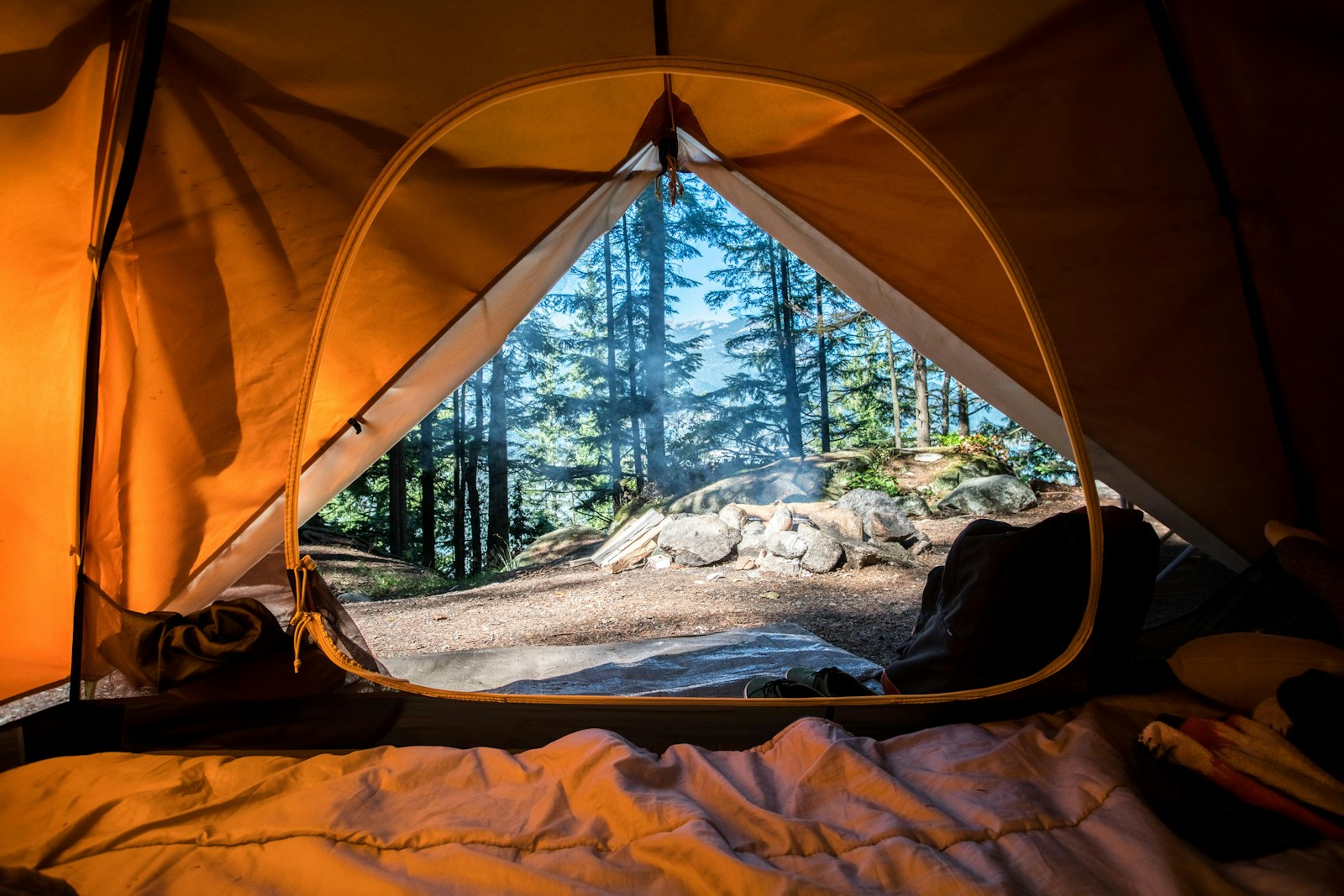Imagine the exhilarating feeling of lying under a blanket of stars, the faint twinkle from distant galaxies captivating your imagination. The art of stargazing offers a unique form of solace in the vastness of the universe, connecting us to something greater than ourselves. Camping under the night sky creates the perfect opportunity to immerse yourself in this celestial beauty, allowing you to escape the distractions of daily life and find a sense of peace and wonderment. Whether you’re a seasoned astronomer or simply someone yearning for a moment of tranquility, the art of stargazing promises to be a rewarding and awe-inspiring experience.

Choosing the Ideal Location For Stargazing While Camping
Consider light pollution
When choosing a location for your stargazing adventure, it’s crucial to consider the amount of light pollution in the area. Light pollution can greatly impact the visibility of stars, so it’s best to find a spot away from city lights and major highways. Look for areas with a low population density and minimal artificial lighting. National parks and remote rural areas often provide the perfect conditions for stargazing.
Look for open spaces
To fully immerse yourself in the beauty of the night sky, it’s essential to find a location with unobstructed views. Look for open spaces, such as fields or meadows, where there are no tall buildings or dense trees that could obstruct your view of the stars. The more open the area, the better the chances of witnessing stunning celestial displays.
Check the weather conditions
Before embarking on your stargazing trip, always check the weather conditions for your chosen location. Clear skies are essential for optimal stargazing, so look for nights with minimal cloud cover. Additionally, pay attention to the forecasted moon phase, as a full moon can make it difficult to see faint stars and other celestial phenomena. Fortunately, there are several weather apps and websites that provide accurate forecasts specifically for stargazers.
Research nearby camping sites
To make the most of your stargazing experience, consider camping overnight at your chosen location. Research nearby camping sites and find one that offers easy access to the stargazing spot. Camping allows you to fully immerse yourself in nature’s tranquility and spend an entire night amidst the wonders of the cosmos. Look for campsites that offer designated stargazing areas or have a reputation for offering breathtaking views of the night sky.
Preparing for the Trip
Gather essential camping gear
Before heading out on your stargazing adventure, make sure to gather all the essential camping gear. Some essentials include a tent, sleeping bags, camping stove, first aid kit, and insect repellent. These items will ensure your camping experience is comfortable and safe, allowing you to focus on the incredible sights that await you in the night sky.
Pack warm clothing
Stargazing often entails spending long hours outdoors during the night, so it’s crucial to dress appropriately for the weather. Pack warm clothing, including layers that can be easily added or removed as the temperature changes throughout the night. Don’t forget to bring thermal socks, gloves, a hat, and a warm jacket to keep yourself cozy during those cool nights under the stars.
Bring a comfortable sleeping arrangement
A good night’s sleep is essential to fully enjoy your stargazing adventure. Invest in a comfortable sleeping arrangement, such as a cozy sleeping pad or an inflatable mattress, to ensure you wake up refreshed and ready to witness the wonders of the night sky. Don’t forget pillows and extra blankets for added comfort.
Carry necessary food and water supplies
While immersing yourself in the beauty of the night sky, it’s important to stay nourished and hydrated. Pack a variety of lightweight, non-perishable snacks that can be easily consumed during your stargazing sessions. Additionally, carry an ample supply of clean water to keep yourself hydrated throughout the night. Staying properly fueled and hydrated will enhance your overall stargazing experience.
Equip with stargazing essentials
To fully enjoy and appreciate the celestial wonders above, equip yourself with stargazing essentials. These may include a red flashlight to preserve your night vision, a star chart or planisphere to help identify constellations, and a comfortable camp chair or blanket for lounging under the vast expanse of the night sky. Additionally, consider bringing a notebook and pen to jot down any observations or thoughts during your stargazing sessions.
Setting Up Camp
Select a suitable campsite
When setting up camp, it’s essential to carefully choose a suitable campsite that offers the best stargazing conditions. Look for a spot with clear, unobstructed views of the sky. Ensure that the ground is level and free from rocks or any potential hazards. Additionally, consider the proximity of your campsite to your stargazing location, as you don’t want to spend too much time and effort commuting between the two during the night.
Pitch the tent correctly
Pitching your tent correctly is crucial for a comfortable and stress-free camping experience. Make sure to carefully read the tent’s instructions and choose a flat, level area to set it up. Ensure all the stakes are securely anchored, and the rainfly is properly positioned to provide protection against any potential moisture. Taking the time to pitch your tent correctly will ensure a cozy and secure shelter for the night.
Arrange necessary camp furniture
Creating a cozy and inviting atmosphere at your campsite will enhance your stargazing experience. Arrange necessary camp furniture, such as folding chairs, a camp table, and a comfortable mat or blanket to lie on while marveling at the night sky. Don’t forget to set up a designated area for stargazing essentials, like your star chart, binoculars, or telescope, so they’re easily accessible throughout the night.
Create a cozy camping atmosphere
To fully embrace the beauty of stargazing, create a cozy and inviting atmosphere at your campsite. Hang fairy lights or set up lanterns to provide gentle, ambient lighting that won’t interfere with your vision of the night sky. Light a campfire (if permitted) to create a warm and soothing ambiance that adds to the magical experience. Snuggle up in blankets and enjoy the peace and tranquility of nature surrounding you.
Understanding the Celestial Mechanics
Learn about celestial bodies
To deepen your appreciation for stargazing, take the time to learn about the various celestial bodies visible in the night sky. From stars and planets to comets and asteroids, the universe is filled with captivating wonders waiting to be explored. Educate yourself on the different types of celestial bodies and their unique characteristics to enhance your understanding and connection with the cosmos.
Familiarize with constellations
Constellations are groups of stars that form recognizable patterns, and they have been used by humans for centuries to navigate the night sky and tell stories. Take the time to familiarize yourself with some of the prominent constellations, such as Orion, Ursa Major (the Big Dipper), Cassiopeia, and others. Recognizing these constellations will not only help you navigate the night sky but also add depth to your stargazing experience.
Understand star magnitudes
Stars come in a range of sizes and brightness, and their magnitudes are measured accordingly. Familiarize yourself with the concept of star magnitudes, which quantify the brightness of a star. The lower the magnitude, the brighter the star appears to the naked eye. As you gaze at the stars, take note of their brightness and appreciate the diverse characteristics of these luminous celestial objects.
Explore the phases of the moon
The moon is a captivating celestial body that significantly impacts stargazing conditions. Explore the different phases of the moon, from the crescent to the full moon, and observe how it affects the visibility of other celestial objects. During a new moon, when the moon is not visible, the sky is at its darkest, providing optimal conditions for stargazing. Understanding the moon’s phases will help you plan your stargazing adventures accordingly.
Tools and Apps for Stargazing
Binoculars and telescopes
Binoculars and telescopes are invaluable tools for stargazers, allowing you to observe celestial objects in greater detail. Invest in a pair of high-quality binoculars, preferably with larger objective lenses, for a wider field of view. If you’re passionate about stargazing, consider purchasing a telescope, which will allow you to explore the night sky in even more depth.
Star charts and planispheres
Star charts and planispheres are essential tools for navigating the night sky. They provide detailed maps of the stars, constellations, and other celestial objects visible from your specific location and time. These tools help you identify and locate stars and constellations accurately, making your stargazing experience much more informative and engaging.
Stellarium: A popular stargazing app
Stellarium is a popular stargazing app that brings the wonders of the night sky to your fingertips. Available for both mobile devices and computers, Stellarium provides a highly detailed and accurate 3D simulation of the night sky. It allows you to explore the stars, planets, and constellations from any location, at any time. You can adjust the time and date to plan your stargazing sessions or simply enjoy virtual stargazing from the comfort of your home.
NASA apps for celestial events
When it comes to celestial events, NASA has developed several apps that are perfect companions for stargazing enthusiasts. Whether you’re interested in tracking the upcoming meteor showers, observing the International Space Station (ISS), or learning about the latest discoveries in astronomy, these apps provide valuable information and real-time updates directly from NASA’s wealth of knowledge.
Identifying Prominent Stars and Constellations
The North Star (Polaris)
The North Star, also known as Polaris, holds significant importance for stargazers navigating the night sky. Located almost directly above the North Pole, Polaris remains relatively fixed while the rest of the stars appear to rotate around it throughout the night. Learning to identify and locate Polaris will help you orient yourself and find your way among the stars.
Orion and its majestic belt
One of the most recognizable and striking constellations is Orion, named after the mythological hunter. Look for three bright stars in a straight line, forming Orion’s Belt. From there, you can explore the other stars that make up Orion’s distinctive figure. This prominent constellation is visible from both the Northern and Southern Hemispheres and is a favorite among stargazers.
Ursa Major and the Big Dipper
Ursa Major, also known as the Great Bear, is a constellation that includes the widely recognized asterism, the Big Dipper. The Big Dipper consists of seven bright stars that form a ladle-shaped pattern. This celestial landmark is often used to locate other constellations, and its distinctive shape never fails to captivate stargazers of all levels.
Cassiopeia and the ‘W’ shape
Cassiopeia is a constellation that can be easily identified by its distinct ‘W’ or ‘M’ shape, depending on its positioning in the sky. Located opposite the Big Dipper, Cassiopeia is visible year-round and is often associated with the mythological queen whose vanity led to her downfall. Take the time to spot this stunning constellation and appreciate its beauty in the night sky.
Observing Meteor Showers
Research upcoming meteor showers
Meteor showers are celestial events that occur when Earth passes through a trail of debris left by a comet or asteroid. These showers offer spectacular displays of shooting stars that streak across the night sky. Research upcoming meteor showers and mark them on your stargazing calendar. Look for well-known meteor showers such as the Perseids, Leonids, and Geminids, as they reliably bring impressive meteor activity.
Find the best viewing time
To maximize your chances of witnessing a meteor shower, find the best viewing time for each event. Meteor showers often have a peak time when the frequency of meteors is at its highest. Plan your stargazing session around this specific window to increase your chances of seeing more shooting stars and witnessing a truly breathtaking celestial spectacle.
Position yourself for optimal visibility
To fully enjoy a meteor shower, position yourself for optimal visibility. Find a spot with an unobstructed view of the horizon, away from buildings and trees that may block your line of sight. The darker the location, the better, as it allows your eyes to adjust to the darkness and enhances your ability to spot even the faintest meteors streaking across the sky.
Note meteor shower radiant points
Each meteor shower is associated with a specific radiant point, the area in the sky from which the meteors appear to originate. Take note of the radiant points for the meteor showers you plan to observe. While meteors can be spotted anywhere in the sky, knowing the radiant point will help you identify the meteors correctly and add to the excitement of the experience.
Spotting Planets and Satellites
Identify visible planets
The night sky offers an ever-changing display of planets, each with its distinct characteristics. Identify visible planets such as Venus, Mars, Jupiter, and Saturn, which are often referred to as the “naked-eye” planets due to their brightness. With a little research and observation, you can track their movements and witness their celestial dance in the night sky.
Track ISS and other satellites
The International Space Station (ISS) and other satellites are visible objects that frequently traverse the night sky. Tracking the ISS is particularly exciting, as it moves swiftly across the sky, appearing like a bright star. Use online resources or mobile apps to determine the timing and trajectory of the ISS and other notable satellites. With a bit of luck and clear skies, you’ll be able to witness these man-made wonders among the stars.
Recognize Venus as the ‘Evening Star’
Venus, often referred to as the “Evening Star” or the “Morning Star,” is the brightest planet visible from Earth. It is often spotted shortly after sunset or before sunrise and can dazzle observers with its radiant beauty. Look for Venus in the western or eastern sky, depending on whether it appears in the evening or morning. Seeing this celestial gem is a true delight for stargazers of all levels.
Search for Mars and Saturn
Mars and Saturn are two captivating planets that can be spotted with the naked eye, and observing them through binoculars or a telescope only adds to the experience. Mars, with its reddish hue, often stands out among the stars, allowing you to easily identify it. Saturn, with its stunning rings, is a sight to behold and a favorite target for amateur astronomers. Take the time to search for these planets and appreciate their unique features.
Photographing the Night Sky
Prepare your camera equipment
Photographing the night sky requires careful planning and the right equipment. Start by ensuring you have a camera capable of long exposures, preferably a DSLR or mirrorless camera. Invest in a sturdy tripod to keep your camera steady during long exposure shots. Additionally, make sure you have spare batteries and plenty of memory cards to capture the magical moments under the stars.
Master long exposure techniques
Long exposure photography is the key to capturing the beauty and majesty of the night sky. Set your camera to manual mode and experiment with different exposure settings, typically ranging from 10 to 30 seconds or more, depending on the desired effect. Use a remote shutter release or the camera’s self-timer function to prevent any camera shake during the exposure. With practice, you’ll be able to produce stunning images that showcase the wonders of the cosmos.
Find your composition
Composition plays a crucial role in astrophotography. Look for interesting foreground elements, such as trees, mountains, or bodies of water, to add depth and perspective to your images. Experiment with different angles and perspectives to find the most visually appealing composition. The night sky offers a magnificent backdrop for your photographs, so take your time to find the perfect composition that captures the essence of your stargazing experience.
Experiment with light painting
Light painting is a creative technique that can add a touch of magic to your night sky photographs. Use a small flashlight or a dedicated light-painting tool to selectively illuminate foreground elements during the long exposure. This technique allows you to create visually striking images by highlighting specific features in the scene. Embrace your creativity and experiment with different light painting techniques to add a unique touch to your astrophotography.
Embracing the Silence and Stillness
Disconnect from technology
Stargazing provides a valuable opportunity to disconnect from the hustle and bustle of everyday life. Embrace the silence and stillness of the night and take a break from technology. Put away your phone, turn off notifications, and allow yourself to fully immerse in the wonders of the night sky. This digital detox will not only enhance your stargazing experience but also provide a peaceful and rejuvenating escape from the noise of the modern world.
Enjoy the tranquility of nature
Camping under the night sky allows you to fully appreciate the tranquility of nature. Take the time to listen to the sounds of the night, from the whispering wind in the trees to the distant calls of nocturnal creatures. Embrace the peace and stillness that envelops you, allowing yourself to connect with the natural world and find solace in its beauty.
Reflect on the vastness of the cosmos
As you gaze up at the stars, take a moment to reflect on the vastness of the cosmos. Ponder the immense distances between celestial objects and the countless galaxies that make up our universe. Contemplate your place in this cosmic tapestry and the profound interconnectedness of all things. Stargazing offers a humbling perspective that reminds us of the awe-inspiring wonders that exist beyond our own little corner of the world.
Appreciate the humbling experience
Stargazing is not just about observing and photographing the night sky; it’s about embracing a humbling experience that connects us with something much greater than ourselves. As you lay beneath the stars, appreciate the sheer scale of the universe and the beauty that lies within it. Let the wonders of the night sky inspire and uplift you, filling your heart and soul with a sense of awe, gratitude, and solace.




Leave a Reply